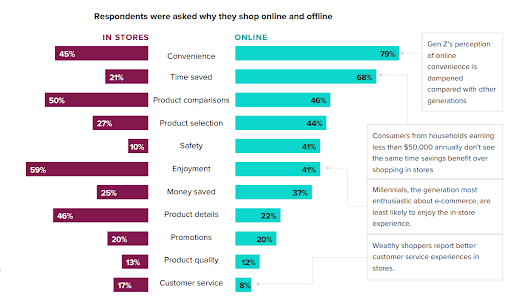These past couple of years the manner in which people took part in their general day to day routines has been markedly different from how things were a few years prior. The main contributing factor to this being the case is the fact that many individuals were not able to leave their homes because of the fact that this is the sort of thing that could potentially end up putting their health at risk.
Ecommerce has risen quite a bit due to these circumstances, with the vast majority of people preferring to shop online instead of shopping for things at brick and mortar stores and the like. With all of that having been said and now out of the way, it is important to note that this trend has been reversing according to a new study that has just been released. This report was released by the Morning Consult, and it showed that physical stores are closing 65% less often than last year which indicates that they have found an appreciable level of equilibrium.
With lockdowns and mask mandates being rolled back as the world starts to regain control of itself, chances are that more people are going to want to go shopping at stores again likely because of the pure novelty value of being able to do something that you were preventing from taking part in previously. In the US alone, around 1,910 new stores have opened in the first two months of 2022, and this might increase exponentially as the demand for in person shopping continues to increase over the course of the year.
41% of the 8,000 or so US based adults that were a part of this survey said that they planned on shopping in stores this year, compared to the 29% that said they preferred doing so online. Surprisingly, Gen Z adults are more likely to want to shop in store than Millennials, with 38% of the former saying this is the case as compared to 36% of the latter. This could change the various ecommerce strategies that retailers have been thinking of putting in place.
Read next: 5G Capable Phones Reached 51% Global Market Penetration in January 2022
Ecommerce has risen quite a bit due to these circumstances, with the vast majority of people preferring to shop online instead of shopping for things at brick and mortar stores and the like. With all of that having been said and now out of the way, it is important to note that this trend has been reversing according to a new study that has just been released. This report was released by the Morning Consult, and it showed that physical stores are closing 65% less often than last year which indicates that they have found an appreciable level of equilibrium.
With lockdowns and mask mandates being rolled back as the world starts to regain control of itself, chances are that more people are going to want to go shopping at stores again likely because of the pure novelty value of being able to do something that you were preventing from taking part in previously. In the US alone, around 1,910 new stores have opened in the first two months of 2022, and this might increase exponentially as the demand for in person shopping continues to increase over the course of the year.
41% of the 8,000 or so US based adults that were a part of this survey said that they planned on shopping in stores this year, compared to the 29% that said they preferred doing so online. Surprisingly, Gen Z adults are more likely to want to shop in store than Millennials, with 38% of the former saying this is the case as compared to 36% of the latter. This could change the various ecommerce strategies that retailers have been thinking of putting in place.
Read next: 5G Capable Phones Reached 51% Global Market Penetration in January 2022



